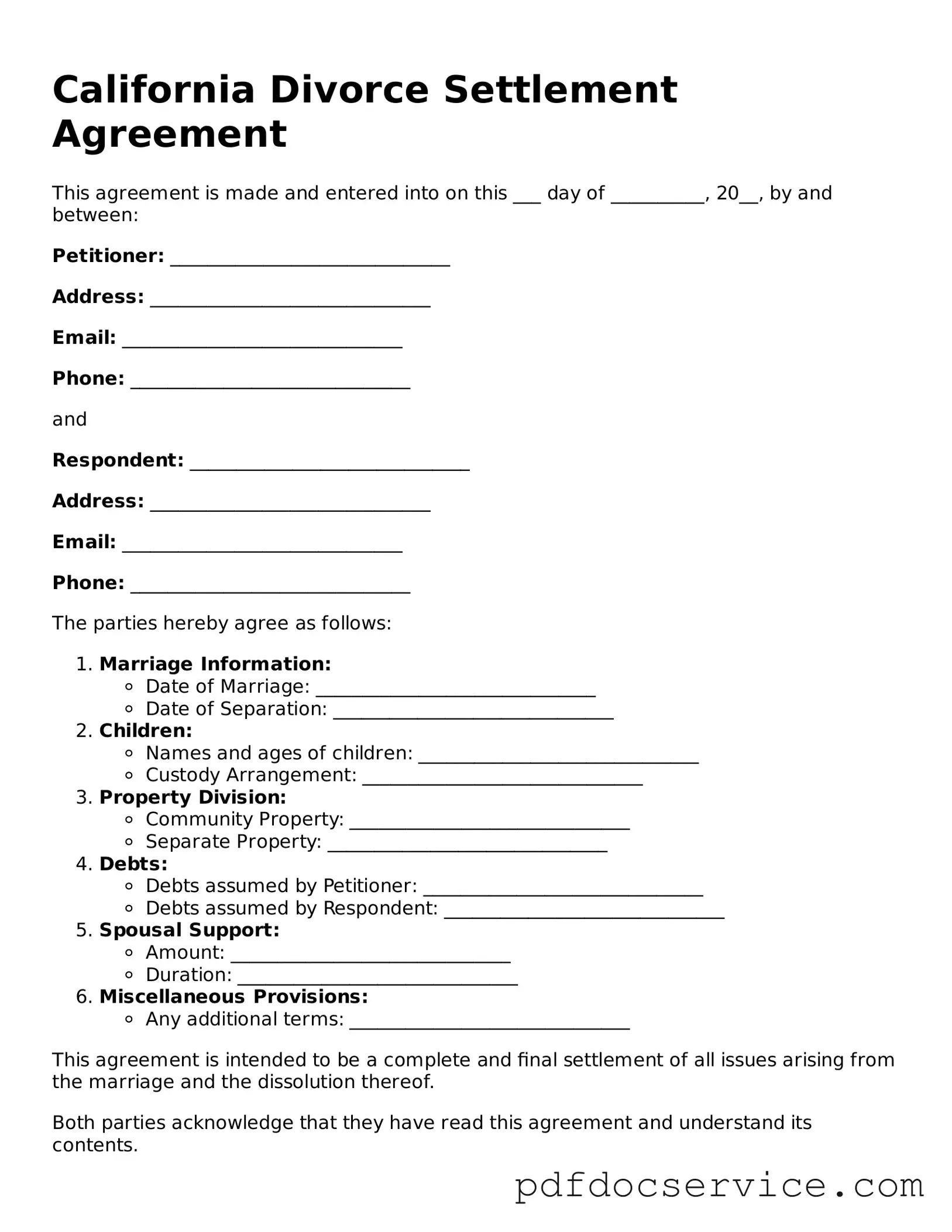What is a California Divorce Settlement Agreement?
A California Divorce Settlement Agreement is a legal document that outlines the terms agreed upon by both spouses regarding the division of assets, debts, child custody, and support obligations. This agreement is essential for finalizing the divorce and ensures that both parties understand their rights and responsibilities.
Both spouses involved in the divorce process need to complete the Divorce Settlement Agreement. It is crucial for those who wish to settle their divorce amicably and avoid lengthy court proceedings. This form is particularly beneficial for couples who have reached mutual agreements on various issues.
The Divorce Settlement Agreement generally includes:
-
Division of property and debts
-
Child custody arrangements
-
Child support obligations
-
Spousal support (alimony) details
-
Any other relevant agreements between the parties
Each section should be carefully detailed to ensure clarity and prevent future disputes.
How do I file the Divorce Settlement Agreement?
After completing the Divorce Settlement Agreement, you must file it with the court. This process typically involves:
-
Making copies of the signed agreement for both parties and the court
-
Submitting the original agreement to the court clerk
-
Paying any required filing fees
Once filed, the court will review the agreement, and if everything is in order, it will be incorporated into the final divorce decree.
Can I modify the Divorce Settlement Agreement after it is filed?
Yes, modifications to the Divorce Settlement Agreement can be made, but both parties must agree to the changes. If there is a significant change in circumstances, such as a job loss or a change in the needs of the children, a formal modification may be necessary. This typically involves filing a motion with the court.
What happens if one party does not comply with the agreement?
If one party fails to comply with the terms of the Divorce Settlement Agreement, the other party can seek enforcement through the court. This may involve filing a motion for contempt or seeking a modification of the agreement. The court takes these matters seriously and can impose penalties for non-compliance.
While it is possible to complete the Divorce Settlement Agreement without legal assistance, consulting with an attorney is often recommended. An attorney can help ensure that the agreement is fair, legally sound, and meets all necessary requirements. This can prevent potential issues down the line and provide peace of mind during the divorce process.
